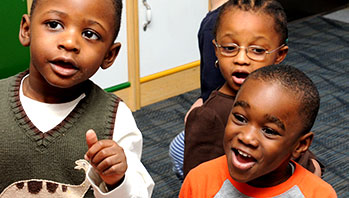- dam
- dome
MA Standards:
Speaking and Listening/SL.PK.MA.1a: Observe and use appropriate ways of interacting in a group (e.g. taking turns in talking, listening to peers, waiting to speak until another person is finished talking, asking questions and waiting for an answer, gaining the floor in appropriate ways).
Head Start Outcomes:
Social Emotional Development/Self-Regulation: Follows simple rules, routines, and directions.
Language Development/Receptive Language: Attends to language during conversations, songs, stories, or other learning experiences.
PreK Learning Guidelines:
English Language Arts/Language 1: Observe and use appropriate ways of interacting in a group (taking turns in talking; listening to peers; waiting until someone is finished; asking questions and waiting for an answer; gaining the floor in appropriate ways).
English Language Arts/Reading and Literature 12: Listen to, recite, sing, and dramatize a variety of age-appropriate literature.
EEC Infant and Toddler Guidelines:
PW50.: The older toddler engages in a variety of physical activities.
Recite Together: “Busy Beaver”

© Commonwealth of Massachusetts, Department of Early Education and Care (Jennifer Waddell photographer). All rights reserved.
ELA Focus Skills: Gross Motor Skills, Phonological Awareness (Rhythm and Rhyme), Vocabulary
Remind children that the beavers in Row, Row, Row Your Boat were busy making a dam that stopped the bears from passing by.
Recite the poem “Busy Beaver” and act it out. Invite children to recite with you and do the actions. Do this several times as a good stretching exercise.
Busy Beaver
I’m a busy, busy beaver,
I haven’t time to play. (shake head “no”)
I’m helping to build a new home
And gnawing wood all day. (pretend to gnaw wood)
Then I’ll dive down underwater (diving motion)
And swim up to my home. (swimming motion)
Inside I’ll be safe and happy,
Under my wooden dome. (hands linked over head to form dome)
English Language Learners: Model the movements for children and say the words big and small as you do. Have children repeat the words and movements.
